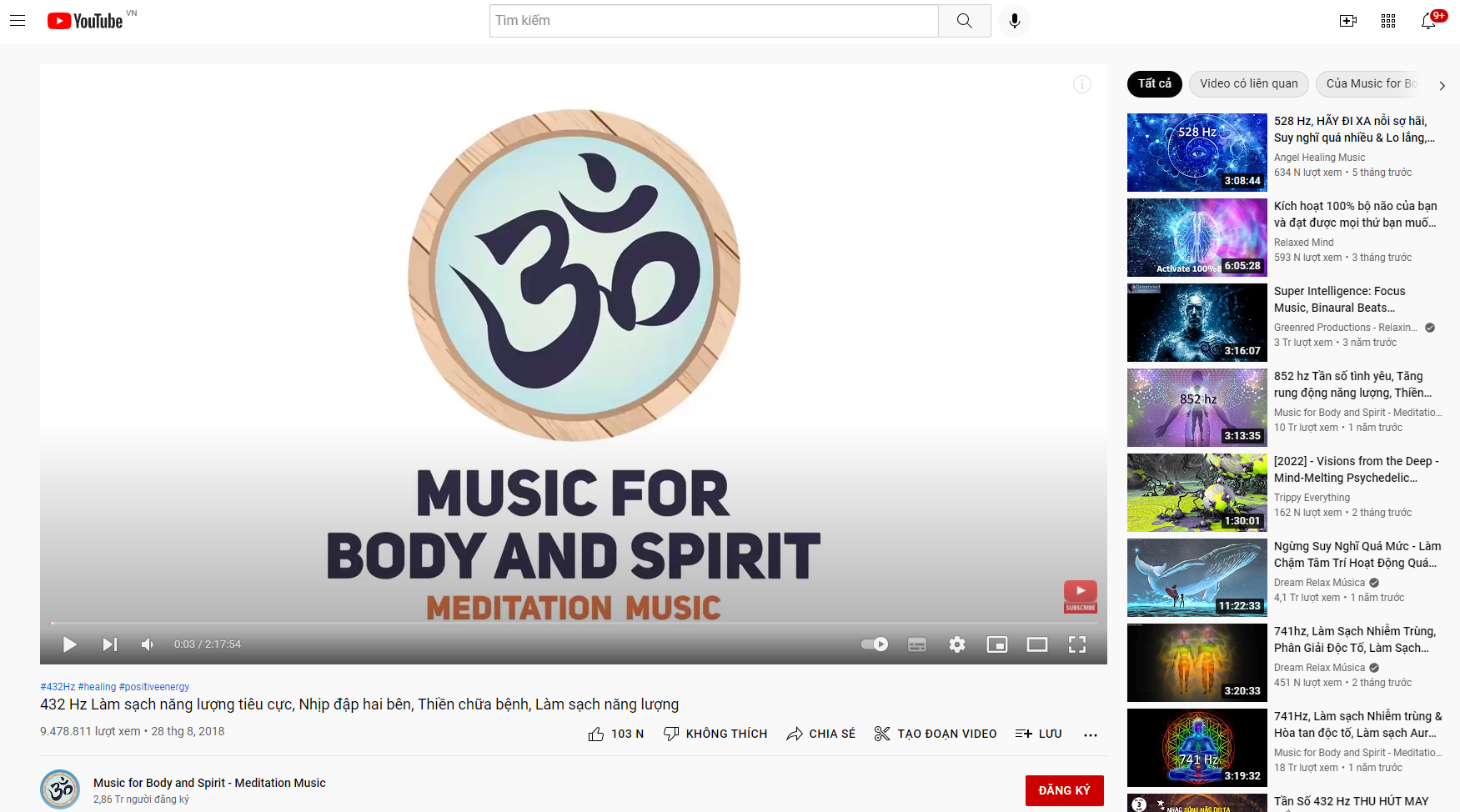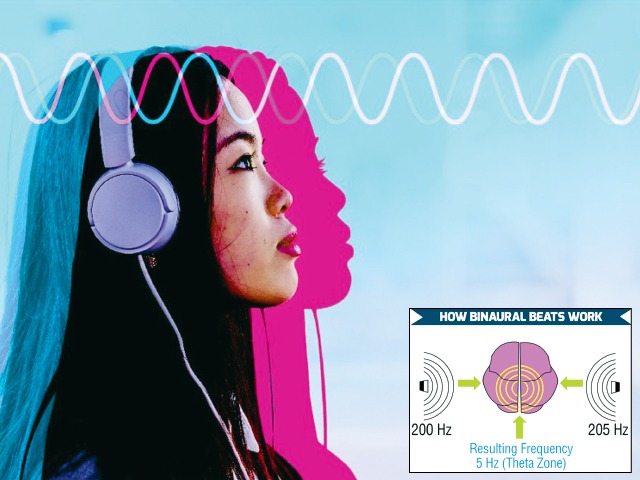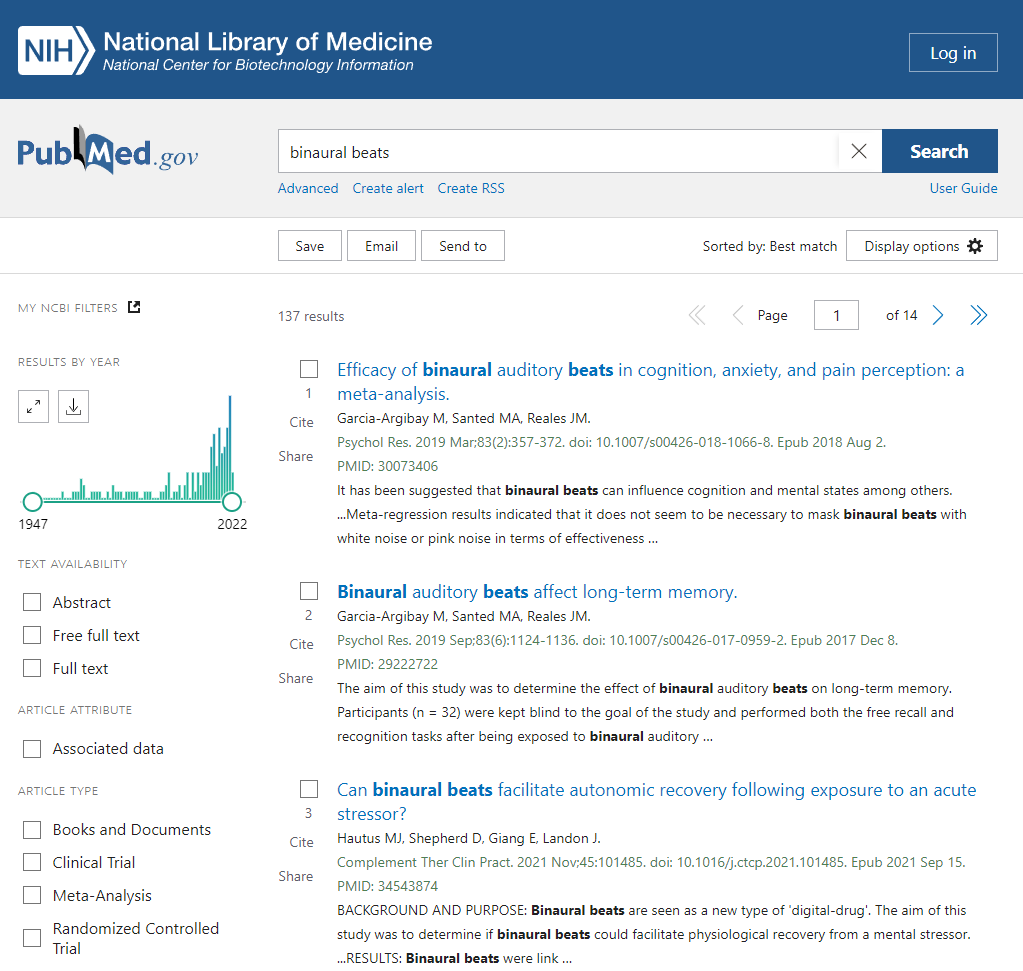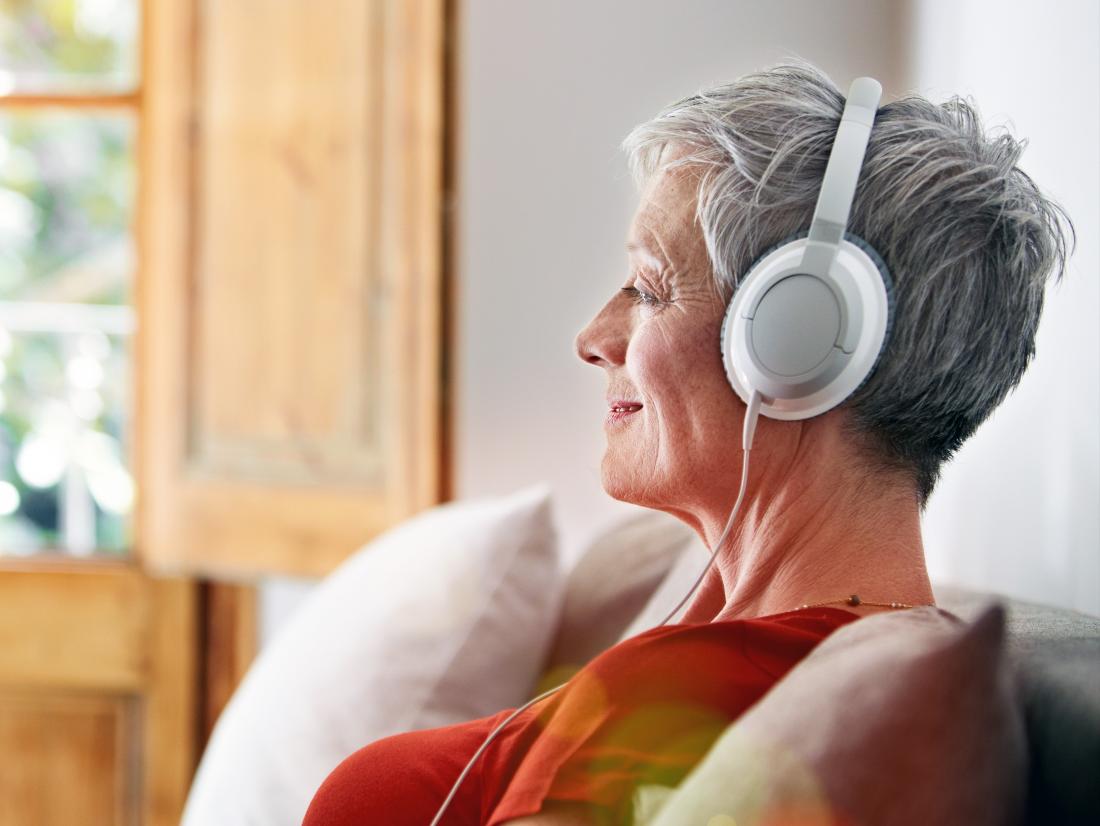Sometimes when listening to meditation music to promote concentration on Youtube, you will be suggested to a song with the keyword “binaural beats“. And if you click on this keyword, you will get thousands of results that are music hours long.
There have been millions to tens of millions of people listening to them. Because these videos claim, the music it plays helps”massage” your brain, promote concentration, improve memory, enhance intelligence.

Some titles even promise more, for example the video above claiming this is 432 Hz audio capable of “healing meditation” and “clear negative energy”. Some other videos say they help you cure insomnia, sleep better and deeper, even achieve lucid dreaming.
But is that really the case? In this article, we will find out which effects of binaural beats are scientifically proven to be real, and which effects are just exaggerated?
First of all, what are binaural beats?
This word is very difficult to translate into Vietnamese, you can call it “binaural songs” or “double eardrum“. The idea is simple: I’m going to play a 400 Hz sound into your right ear, and a 402 Hz sound center into your left ear. Because the frequencies of these two sound waves are almost the same. equally, your brain will think of them as one and process them as a single sound.
During that process, a sound wave that is the difference between the two frequencies will be ejected – a 2 Hz wave here. This wave is born “stuck” in your brain and depending on which brainwave it matches, you get an effect that matches that.

Heathline cites several studies that show:
In the delta range (1 to 4 Hz), binaural beats are said to help you relax and sleep deeply. – — In the theta range (4 to 8 Hz), they work to promote REM sleep, reduce anxiety, and relax, as well as being able to put you into meditative and creative states.
With an alpha range (8 to 13 Hz), binaural beats also have a relaxing effect, reducing anxiety and directing you to positive thinking.
With a lower beta range (14 to 30 Hz), claims say binaural beats increase focus, alertness, help you solve problems, and improve memory.
– Finally, the gamma range (30 Hz to 50 Hz) was found to be useful in enhancing learning efficiency.
Does binaural beats work as advertised?
The effects of binaural beats have been studied for almost two centuries, ever since it was first discovered by Heinrich Wilhelm Dove, a Prussian physicist, in 1841.
In 1973, the term was first described in the scientific literature. It was an article titled “Auditory Beats in the Brain” (roughly translated as “Auditory music in the brain“) by Gerald Oster published in Scientific American.
Since then, there have been hundreds of studies on the effects of binaural beats on the human brain and psyche, as you can find in the US National Library of Medicine (PubMed).

Academic research has focused on two aspects of binaural beats usage. The first aspect considers it as a medical treatment or therapy. The second aspect considers binaural beats as a type of alternative or adjunctive therapy to psychostimulants.
Psychoactive drugs are drugs that affect the nervous system, altering the user’s mood, cognition, or behavior. This is where binaural beats get its nickname: a kind of “digital drugs“.
Binaural beats as medical therapy
Studies investigating the medical effects of binaural beats have found this type of therapy to be effective in reducing pain, reducing anxiety, and enhancing memory.
For example, here’s a meta-analysis of 22 studies on the effects of binaural beats published in the journal Psychological Research in 2018. The analysis found the effects of binaural beats on memory, attention, anxiety, and decreased anxiety. Pain was consistent and statistically significant. That means the therapy really works.
Even dose responses have been found. Like medicine, the more binaural beats a person listens to, the more effective they get.

Several binaural beats studies have performed double-blinded randomized controlled cross-over trials. This is considered the gold standard of clinical medical research.
Results from one of these trials were published in the European Journal of Pain. It showed binaural beats to reduce pain intensity and stress compared to placebo. Chronic pain patients may be able to reduce their use of prescribed pain relievers after listening to binaural beats.
With these studies, binaural beats can be considered as a medical therapy based on digital sound. In the past, ASMR (Autonomous Sensory Meridian Response) sounds have also been shown to be effective in the treatment of certain mental health conditions.
However, studies examining the focus-enhancing effects of binaural beats are conflicting. In other words, the effect of binaural beats on improving attention has yet to be proven.
The effects of binaural beats on sleep and dreams have also not been well studied.

Binaural beats can be abused as a ‘digital drug’
In a new study published in the Journal of Drug and Alcohol, scientists say a certain number of listeners around the world are using binaural beats to achieve drug-like euphoria.
This is drawn from a survey of 30,000 people in 22 different countries, it shows that 5% of survey respondents say they have heard binaural beats. More than a tenth of these said that they use these sounds for entertainment and hallucin-seeking, not therapy.
“This survey shows that this is an ongoing practice in many countries. We’ve heard rumors about it before, but this is the first time we’ve officially asked people how, why, and when they use them.”said Monica Barratt, study author and a social scientist at RMIT University, Australia.
“Like inedible substances, some binaural beats users are chasing euphoria.”
Whether binaural beats produce the same psychoactive effects as illegal drugs remains unknown to scientists. But regardless of the answer, this new study is raising concerns.
That’s because most people use binaural beats as a form “digital drugs” are all in their 20s, and have used banned substances such as MDMA or marijuana. Most of these teenagers are from the United States, Mexico, the UK, Brazil and Poland.
According to the survey results, these kids can easily access binaural beats on mobile video streaming websites. They also easily find binaural beats named after a specific drug, such as “Molly Rave Riot” (towards MDMA) or “Roofie Enhanced calm” (towards Rohypnol).
Scientists worry that with exposure to binaural beats in this way, adolescents could be drawn into illicit drug use, even if binaural beats are not psychoactive. like drugs.
On the other hand, if this type of music can cause neurological effects such as feelings of euphoria or hallucinations, this will be a warning to the authorities, because binaural beats are now appearing. very popular on the internet.
Barratt’s team says that in the future, scientists could conduct gold-standard double-blind trials on groups of detox subjects to see if binaural beats have the same effects as drugs.
If it’s really a form of “digital drugs“, we’re in a world where”drug” possible “download” publicly online rather than surreptitiously traded. This will be an issue that legal policymakers, clinicians and sociologists need to be aware of in advance.
See Sciencealert, Theconversation, Pubmed
